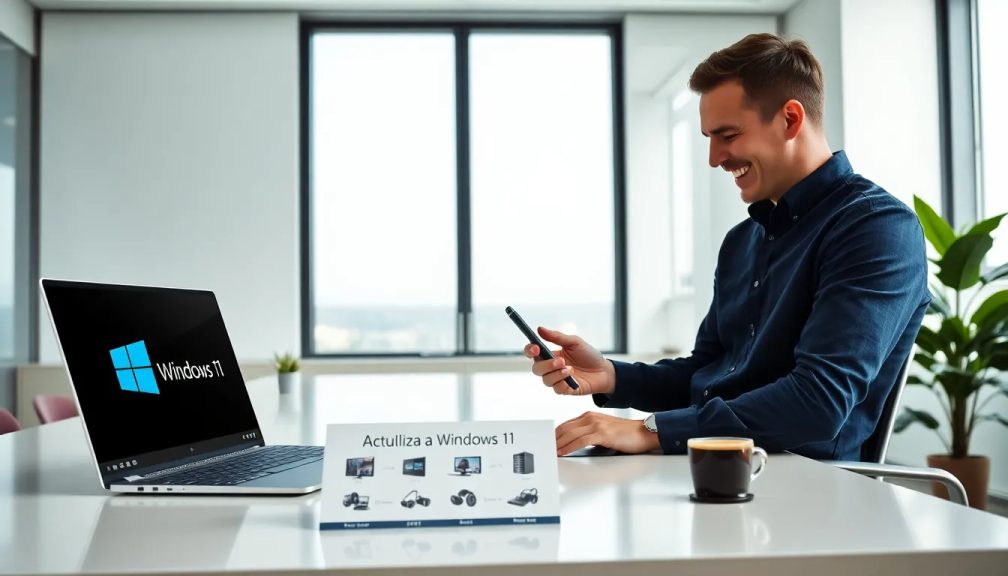Microsoft encourages Windows 10 users to buy Arm PCs with Windows 11

As the deadline for Windows 10 approaches, users are left wondering what their next steps should be. Microsoft is not just closing a chapter; they are pushing users toward a new ecosystem. With the advent of Windows 11 and the new Copilot+ feature, the shift to Arm-based PCs is not merely a suggestion—it’s a strategy aimed at reshaping the entire landscape of personal computing.
- Microsoft's pivotal shift: Moving beyond Windows 10
- The marketing strategy behind the transition
- The implications for users and the computing landscape
- The changing landscape of partnerships in computing
- What users should consider before making the switch
- Future expectations: What lies ahead for Microsoft and Arm
Microsoft's pivotal shift: Moving beyond Windows 10
The end date for Windows 10 is set for October 14, 2025. This date has been emphasized repeatedly, signaling a significant transition for users. Unless you’ve opted for an extended support plan, your current operating system will soon be obsolete. However, this closure symbolizes more than just the end of an era; it is part of a larger strategy devised by Microsoft to encourage users to embrace new hardware and software ecosystems, specifically Arm-based PCs running Windows 11 and Copilot+.
Official communications from Microsoft tout features like over a day of battery life, chips that can handle more than 40 trillion AI operations per second, and an ever-growing app catalog. Yet, beneath this façade lies a carefully orchestrated marketing campaign designed to instill fear and necessity among users, ultimately benefiting companies like Qualcomm and Arm.
The marketing strategy behind the transition
Microsoft’s messaging is meticulously crafted, akin to a political campaign that manipulates language to serve its agenda. By emphasizing well-known applications such as Office, Photoshop, Teams, Premiere, Dropbox, Netflix, and Spotify, the company aims to convey that the future of Windows lies not with the existing hardware still in good working condition but rather with the new systems they are pushing for sale.
This strategy is not arbitrary; with the impending end of support for Windows 10, millions of computers will soon become obsolete. Instead of merely presenting the transition as an upgrade to Windows 11, Microsoft is steering users toward Copilot+, which incorporates programs like App Assure and Arm Advisory Service. These initiatives are not altruistic gestures aimed at developers but are designed to ensure compatibility with Arm architecture, eliminating excuses for not purchasing new PCs.
Behind this shift is a strategic alliance with Qualcomm, directed explicitly against a common competitor: Apple.
Microsoft's goal: Competing with Apple
To bolster their case, Microsoft makes bold comparisons with Apple products. They claim that PCs running Windows 11 with Copilot+ are up to 85% faster than a MacBook Air with an M2 chip and outperform the M3 model in AI tasks. Furthermore, they boast about impressive battery life, claiming 22 hours of local video playback and 15 hours of web browsing.
These statistics are striking, but they also reflect an underlying pressure: to receive adequate support on Windows, users must not only update their operating systems but also invest in new hardware—preferably, a Qualcomm-based Arm laptop—to fully transition away from Windows 10.
The implications for users and the computing landscape
This shift leaves little room for user choice. Microsoft paints a picture of a future filled with enhanced productivity and advanced security, yet this narrative effectively nudges millions of users toward abandoning their reliable, functional PCs. While some may welcome the idea of a new laptop, for many it will become a costly obligation.
Microsoft leans heavily on themes of innovation and AI as justifications for this transition, but the reality is that this move is designed to close one chapter and open another where Arm architecture becomes a prerequisite for using their latest software offerings.
The changing landscape of partnerships in computing
Historically, Microsoft has relied on partnerships with companies like Intel and AMD, but Qualcomm’s growing influence signals a shift in priorities. The company is not merely looking to phase out Windows 10; they aim to make Arm-based PCs with Windows 11 the cornerstone of their new vision led by Copilot+.
For those of us currently using Windows 10, it may feel like a forced transition. While a minority may embrace the prospect of new hardware, the reality is that many will feel pressured to upgrade due to the impending lack of support. The implications of this shift will be felt not just by consumers but also by developers and businesses that rely on a stable computing environment.
What users should consider before making the switch
Before diving into the world of Arm-based PCs with Windows 11 and Copilot+, users should weigh several factors:
- Compatibility with existing software and applications.
- The cost of new hardware versus the benefits of upgrading.
- Long-term support and updates from Microsoft.
- The performance claims made by Microsoft and their real-world implications.
- Potential learning curves associated with new software environments.
Future expectations: What lies ahead for Microsoft and Arm
As 2025 approaches, many will be watching closely to see how these changes unfold. Microsoft's strategy could reshape the personal computing landscape, but not without resistance. While they hope to attract users to their new ecosystem, the road ahead is fraught with challenges.
Ultimately, whether users embrace this change will depend on how compelling Microsoft can make their offerings. The transition to Arm and the promise of enhanced performance must live up to the expectations set in their ambitious marketing campaigns.
To gain further insight into the implications of these changes, you might find this video informative:




Leave a Reply